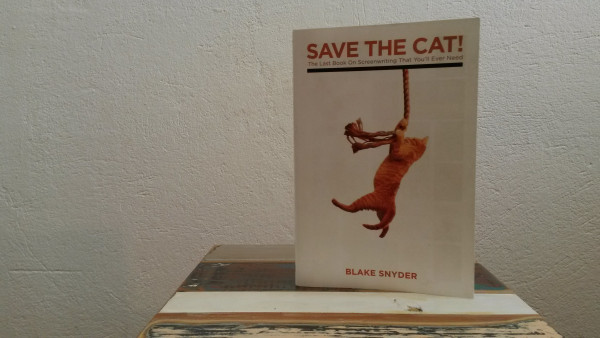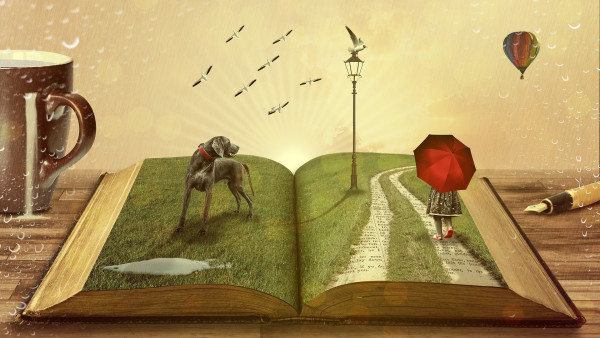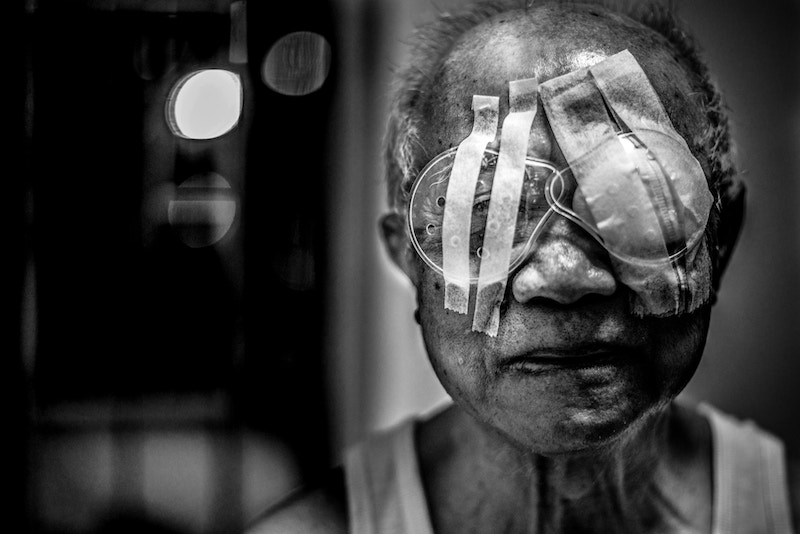
Guest post by Ali Luke.
 Ali Luke is a freelance writer and novelist who blogs about making the most of your writing time at Aliventures. For her best tips on making time to write, sign up for her email newsletter: you’ll receive a free copy of her mini ebook Time to Write: How to Fit More Writing Into Your Busy Life, Right Now.
Ali Luke is a freelance writer and novelist who blogs about making the most of your writing time at Aliventures. For her best tips on making time to write, sign up for her email newsletter: you’ll receive a free copy of her mini ebook Time to Write: How to Fit More Writing Into Your Busy Life, Right Now.
Pacing in fiction is how quickly—or slowly—the story progresses. The right pace for a story depends on its genre. If you’re reading a thriller, you’ll expect a fast-paced read with lots of action; if you’re reading a historical novel or epic fantasy, you might enjoy a slower pace with lots of emphasis on the world of the story.
It’s tough to get pacing spot-on when you’re drafting. It might take you years to write a book that takes just hours for someone to read. What feels “slow” to you as you write might actually go by pretty quickly on the page. Or, you may find that you repeat yourself, going over the same narrative ground multiple times, because you barely remembered what you wrote six months ago.
So, don’t worry about your pacing as you draft. Instead, address it in the redrafts—ideally, with the help of beta readers, but even simply reading over your full manuscript yourself can help you spot areas where the pace feels off.
Here’s what to look for when redrafting your work. (more…)

How perceptive a character is of her surroundings may have dramaturgical relevance.
A character who is good at noticing small details may make a good spy or detective, so if you are developing a detective or spy you may want to give your character this ability. But whatever your character’s profession, stop at least once per scene and ask yourself,
What is a detail that only this character might notice?
Why is this important? Because their perceptions can make characters more interesting and vivid.
If a certain plot event hinges on a character perceiving some small detail or other, it may be a good idea to plant a foreshadowing moment long before the scene, to heighten the impact of the act of perception.
Furthermore, a character’s perception may influence how your audience understands and enjoys the entire story. How exactly depends on two important factors:
- narrator
- point of view
(more…)

Some theorists have posited that stories are all about problem-solving. And certainly – as we have seen – problems are at the very core of story. So by giving the audience a chance to vicariously experience protagonists dealing with problems, a story is in effect a sort of playground or simulation where we can experience what potential problems and solutions feel like – but without any real-life consequences.
An important consideration here is cause and effect. In real life, what we experience has so many causes that it is well-nigh impossible to accurately pinpoint them all. We constantly feel the effects, but it’s hard to pinpoint all the causes. Nonetheless, we really like to have explanations for what’s going on, it gives us a greater sense of control over our own lives. As a species, we seek agency, we’re always looking for what caused something to happen, for the why behind things being as they are. We find it very confusing when we don’t know the reason for the events we live through, and we build elaborate mental constructs to explain to ourselves the world as we perceive it. In this context, we sometimes speak of “narratives”.
In stories, every scene must be the result of a preceding plot event. As we have said before, in between each plot event of a narrative you should be able to place the words not “and then”, but “because of that …”. (more…)
What a character might know that others don’t – including the audience

Some characters have secrets. We are not necessarily talking about their internal problem or the need that arises out of it (they may be aware of such a problem or not.) We are talking about information that makes a difference to the story once it is shared.
Character secrets are intimately bound to the scene type called a reveal (which does not necessarily have to entail a revelation).
In terms of story (or rather the dramaturgy of the story), if a character has a secret that is never revealed, the secret is irrelevant. Only if the secret is made known at some point in the narrative does it really exist as a component of the plot.
For authors, the main aspects of character secrets to control are:
- What plot event brings the secret about (this may be a backstory event)?
- How does the secret alter or determine the character’s decisions or behaviour?
- Does the character share the secret with another character at any point, and if so when (in which scene)?
- At what point in the narrative (in which scene) does the audience receive knowledge of this secret?
Who are you, really?
If it is so important the character has a secret, then, often, the secret becomes part of who this character is. Their role in the story, their identity within the story, is determined by their secret. So secrets are dramaturgically important. (more…)

Nothing should be more important to an author than how their story makes the audience feel.
As an author, consider carefully the emotional journey of the reader or viewer as they progress through your narrative.
The audience experiences a sequence of emotions when engaged in a narrative. So narrative structure is a vital aspect of storytelling. The story should be touching the audience emotionally during every scene. Furthermore, each new scene should evoke a new feeling in order to remain fresh and surprising.
The author’s job is to make the audience feel empathy with the characters quickly, so that an emotional response to the characters’ situation is possible. Only this can lead to physical reactions like accelerated heartbeat when the story gets exciting. We have to care.
This “capturing” of the audience, making the reader or viewer rapt and enthralled, requires authors to create events that will show who the characters are and how they react to the problems they must face. The audience is more likely to feel with the characters as the plot unfolds when the characters’ reactions to events reveal something about who they really are – and how they might be similar to us.
One Journey to Spellbind Them All
Here we present a loose pattern that we think probably fits for any type of story, whatever genre or medium, however “literary” or “commercial”. It’s not prescriptive, just a rough checklist of the stages in the emotional journey the audience tacitly expects when they let themselves in on a story. The emotions are in more or less the order they might be evoked by any narrative.
Curiosity
(more…)

There are two definitions of story beat. Both of them refer to a change.
One use of the term beat refers to the subtle change in the dynamic of a relationship that a line of dialogue brings about in a scene. There are usually several beats within a scene, each a marker for pushing the scene forwards dramatically.
The other meaning of the word beat in storytelling applies to changes in the plot brought about by scenes. A plot is a succession of events linked causally, a narrative chain of cause and effect. One event effects a change, determining what happens in subsequent scenes. Writers might arrange these events on a board or “beat sheet” during the planning phase. (more…)
How narrative structure turns a story into an emotional experience.

Image: Comfreak, Pixabay
Storytelling is a bit of an overused buzzword. While we are all – by dint of being human – storytellers, how aware are you of the principles of dramaturgy? What exactly constitutes a story, in comparison to, say, a report or an anecdote?
And just to be clear, the following is not a story. It’s an how-to article.
Whatever the medium – film or text, online or offline –, storytelling has something to do with emotionally engaging an audience, that much seems clear. So is a picture of a cute puppy a story? Hardly.
Stories exist in order to create a difference in their audience. Stories always address problems and tend to convey the benefits of co-operative behaviour.
While there simply is no blueprint to how stories work, let’s examine the elements that recur in stories and try to find some patterns.
Who is the story about?
All stories are about someone. That someone does not have to be a person, it can be an animal (Bambi) or a robot (Wall-e). But a story needs a character. In fact, all stories have more than one character, with virtually no exceptions. This is because the interaction between several characters provides motivation, conflict and action.
Moreover, stories usually have a main character, the figure that the story seems to be principally about – the protagonist. It is not always obvious why one character is the protagonist rather than another. Is she simply the most heroic? Is she the one that develops most? Or does she just have the most scenes?(more…)
Events propel narrative. Narrative consists of a chain of events.
These do not have to be spectacular action events – they can be internal psychological events if your story is about a man who does not leave his room, or spiritual events if you are recounting the story of Buddha sitting beneath the tree. But events there must be if there is to be a story.
In this post we’ll discuss –
Events in a story are effectively bits of knowledge the author wants to impart – in a particular order, the narrative – to the recipient, i.e. the reader or audience. The story is told when all the pertinent knowledge has been presented, when all the bits of information necessary for the story to feel like a coherent unity are conveyed. An author(more…)
Any event happens sometime and somewhere.
We have discussed time a great deal in this blog. Of course, the spatial dimension may be just as relevant.
The Story World
We may distinguish between the overall story world location and specific locations. By story world we refer to the overall setting and logical framework of the story. This is always unique to the story, although that becomes most obvious in stories set either in a fantasy world (like The Lord Of The Rings) or in stories that have a setting tightly bound to a geographical feature, such as Heart of Darkness, Apocalypse Now, or Deliverance. In each of these latter examples, a river – and the journey up or down it – provides the story world. Yet story world is more than just physical location. It describes an entire environment, including the ethical dimensions. Consider Wall Street or The Big Short, stories that describe a “world” where making money comes first.
The setting is usually established in the first part of the story, and the rest of the story should be true to what has been set up at the beginning.
Locations
Within the entirety of the “world” come the specific locations(more…)

This may seem like a silly question. How long is a piece of string, right? And the simple answer is:
ideally, a story is as long as it needs to be, and no longer.
There are norms that have developed over time, and which are more or less inculcated into us due to our exposure to stories in their typical media. Back in the 1970s or 80s a music album contained a total of about 40 minutes of sound, because that is as much as would fit on a long-playing vinyl 33 rpm record, approximately 20 minutes on either side. With the advent of the CD, suddenly musicians felt the artistic need to create albums that were twice as long.
You’d think that stories wouldn’t be subject to such constraints because the carrier media for stories are more flexible. However, when it comes to moving pictures at least, what is typically considered a fair attention span to expect the audience to tolerate does seem prone to popular beliefs by industry players in the respective markets. For example, a typical feature length film is roughly two hours long. This is practical because cinemas can comfortably manage two screenings an evening. If the film is good enough, it could of course easily be longer, but at some point viewers become restless and need an intermission.
A typical two hour-ish movie has between forty and sixty scenes. Formatted according to industry standards, a screenplay has approximately as many pages as the finished movie would have minutes. In terms of plot events, some people in Hollywood believe that a commercial movie should have exactly forty (which in Beemgee’s plot outlining tool would mean exactly 40 event cards).
Content and form may be mutually determined, to some degree at least. A short story is usually considered such if it has less than 10.000 words. By dint of its length, a short story probably concentrates on one character’s dealing with one specific issue or occurrence, and is unlikely to have subplots or multiplots (that is, be about more than one protagonist).
Short stories are great practice for writers cutting their teeth. Our friends at the self-publishingschool have gathered 11 Easy Steps for Satisfying Stories.
A piece of written prose fiction between 10.000 and 50.000 words is often considered a ‘novella’. This is a sort of hybrid between the short story and the novel. The narrative of a novella is likely to cover more ground – that is, relate a longer and more complex set of events – than a short story simply because it is longer than a short story. But to state that a novella perforce has more depth or more action than a short story would be a meaningless generalization. What is likely is that the focus in a longer narrative such as a novella is on a string of occurrences (or chain of events, i.e. causally linked events) rather than the story revolving around the meaning and effects of a single occurrence. (more…)

One of the most important choices an author must make concerns Point of View.
In storytelling, people use the term Point of View (or PoV) to refer to different things. We’ve narrowed it down to four definitions:
- The overall perspective from which a story is told
- The scene by scene perspective of a story
- The narrator’s point of view
- Attitude or belief system of the author
Overall perspective
The entire Star Wars saga is, in very general terms, told from the point of view of the two characters that have least status: the robots C-3PO and R2-D2. They are not present in every single scene, but they are part of the overall course of events – and in a ironic tip of the hat to their function of providers of overall point of view, George Lucas has C-3PO relate the entire story so far to the Ewoks in Return of the Jedi.
George Lucas borrowed the idea from Akira Kurosawa’s The Hidden Fortress, which tells a story of generals and princesses from the point of view of two peasants. These two are involved in the action, but understand less about what they see going on than the audience does.(more…)
More than any other part of a story, the beginning has to grab the audience’ or reader’s attention.
In the beginning, before audience or readers are emotionally involved and concerned about the fates of the characters, the danger of them turning away from the story is greatest.
Now, there’s more to a beginning than the kick-off event. While being an attention grabber, the entire first section of a story also has to establish the following:
- Who the story is about
- What the story is about
- Where the story takes place
That sounds self-evident, but all the elements needed to answer those three points amount to an awful lot of information. And at this stage, the audience or readers are not yet patient or forgiving, because they are not yet emotionally hooked.
In this post we will:
- look at the who/what/where
- determine the three key events that the first section of a story must include
- provide a checklist of all the elements the first part of a story requires
Who/what/where
(more…)
Narrative is made of successive events. Not necessarily in the order they occurred.
Narrative is the order in which the author presents a story’s events to the recipient, i.e. the audience or reader. Chronology is the order of these events consecutively in time. Some people use terms from Russian Formalism, Syuzhet and Fabula, to make the distinction.
A chronology usually has less emotional impact than a narrative – essentially a chronology is recounting a report whereas a narrative is telling a story. In a chronology, the plot events are lined up in temporal sequence. You could say “and then” between each event. In a narrative, the emotional effect is closely related to the causality implied by the arrangement of the events. Between each event you could say, “because of that …”.
Narrative therefore carries with it the implication of understanding. The juxtaposition of events, for example, will create associations in the audience’ minds that lead to possibilities of interpretation. While a chronology may explain things, it is in itself inherently neutral. Narrative on the other hand is an arrangement that is usually consciously made by an author who intends something by the particular arrangement, and which, independently of author intention, is subject to interpretation by recipients.
While the convention in most storytelling is linear, i.e. to relate the story’s events consecutively in time (chronologically), we as audiences and storytellers are also very used to narratives that move certain events around. An event may be moved forward, meaning towards the beginning of the narrative, perhaps even to be used as a kick-off. Or possibly events may be withheld from the audience or reader and pushed towards the end, perhaps to create a reveal late in the narrative for a surprise effect – though this technique often feels cheap. Also, an author may use flashbacks to insert backstory events from the past, the past being all relevant events that take place before scene one in the narrative.
As authors, when we begin composing a story, we(more…)

How to describe a full plot event.
We’ll talk here about describing events, since the usual term scene is more general and has different meanings for different media. Furthermore, a scene may conceivably contain more or less than one entire event.
An event in a story requires three elements: characters, function, and (perhaps most importantly) a difference between expectation and result.
In describing each plot event, it is useful to consider the six wh- questions as a guide: Who does what to whom, where, when and why? With this approach, each plot event gains its own logline, which is a good exercise since it forces you as an author to figure out just what dramatic function each plot event has in the context of the overall narrative.
Viewing the overall narrative, certain plot events can function as beats. More on this structural function of plot events here.
Characters
Characters causing events make story. As(more…)
Some people say they don’t like plot.
For some people, plot is like a dirty word. They prefer their stories to concentrate on character. Or premise. Or language. It is action movies or thrillers by Michael Crichton or Robert Ludlum that have plots.
At Beemgee, we believe that the four pillars that hold a story up are plot, character, meaning, and language – with conflict as girders. Every story, no matter how “good” or “bad”, exhibits all four of these pillars. No story can really go without any one of them. Not to mentions aspects like story world, backstory, or exposition.
We have not found a single work of fiction in any medium or genre that does not have a plot. Ulysses has a plot. The Sound And The Fury has a plot. Even some of the most famous attempts in literary history to shun plot, such as I Am a Cat by Soseki Natsume or Tristram Shandy by Laurence Sterne, did not manage to avoid describing events and characters. Their language might be beautiful and to an extent their premise is the attempt to shun plot. But nonetheless, the stories describe events, things happen in an order, the authors made conscious decisions about the sequence in which to relate the occurrences. To what degree the narrative is structured in these books may be topic for debate, but if we consider plot to be simply a sequence of events, then no story can go entirely without it and still be considered a story.
There is an intimate relationship(more…)
Inventing a story that has no backstory is about as easy as finding a perfect rhyme for the word orange.
That is, next to impossible.
Backstory is the stuff that went on before the story begins, or more precisely, before the kick-off event in scene 1. As such, backstory might better be called “pre-story”. It is a necessary component of any story.
After all, the characters come from somewhere – they have pasts, they have histories. These histories have shaped them into who they are, which determines their actions now, in the time of the story. These actions are the source of the events of the story. So some part of the characters’ histories will be relevant to the story – and this bit of information or knowledge needs to be passed on to the audience or reader. That’s why so many stories have “campfire scenes”, a moment of calm usually near the beginning of the second half during which characters recount stories of their pasts to each other. (more…)

Narrative consists of successive events.
One recognizable convention from film is what we might call the kick-off event. It is the opening scene, the very first item in the narrative. This is not to be confused with the inciting incident.
We’ll refer to the kick-off event as the initial scene, and whatever the medium – page, stage, or screen – it ought to capture the audience’s or reader’s attention.
The kick-off event can be drawn from virtually anywhere in the event chronology – like a “capsule” of plot pulled out from the narrative (more on that below). It may open up some questions to arouse our curiosity, or tell us something about a major character that will become relevant much later. It can throw the audience or reader, the recipient of the story, in medias res, straight into the middle of an exciting event. Or it can build up slowly to set the scene and establish a mood.
This first event(more…)

We humans have a built-in predisposition to expect agency.
We look for the person or thing responsible for any action or phenomena we experience; we seek to ascribe “agency” to what we perceive. What this means is that when we notice that something happened, we tend to look for the cause of the event. This probably has a simple evolutionary explanation. If we hear a rustle in the bush behind us, we immediately turn around to see what moved. This reflex is a safety mechanism to detect threats. Before homo sapiens lived in houses, the individuals for whom this reflex worked most efficiently probably lived longer, and thus had better chances of passing on their genes. The point is, we assume that something or someone caused the phenomenon (the rustle) and seek to attribute it to an agent. If we are sitting in our living room and hear a floorboard creak in the hall, we would want to know what caused it too.
This safety mechanism has all sorts of ramifications. It influences(more…)

 Ali Luke is a freelance writer and novelist who blogs about making the most of your writing time at Aliventures. For her best tips on making time to write, sign up for her email newsletter: you’ll receive a free copy of her mini ebook Time to Write: How to Fit More Writing Into Your Busy Life, Right Now.
Ali Luke is a freelance writer and novelist who blogs about making the most of your writing time at Aliventures. For her best tips on making time to write, sign up for her email newsletter: you’ll receive a free copy of her mini ebook Time to Write: How to Fit More Writing Into Your Busy Life, Right Now.











